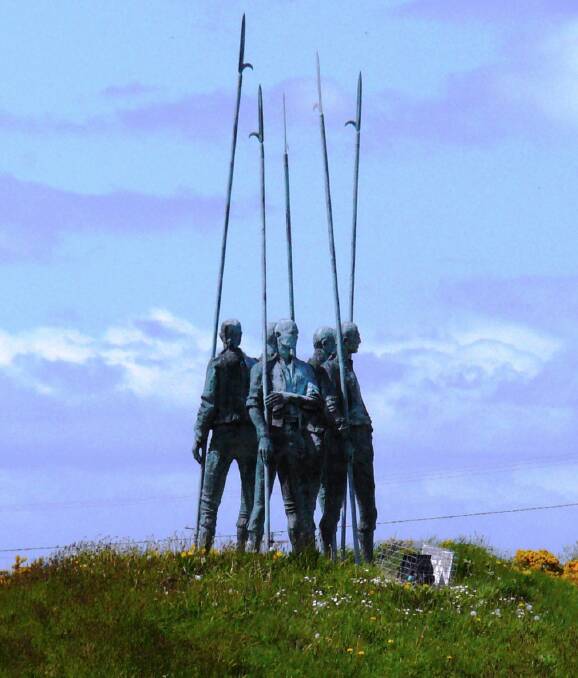
Irish Rebellion of 1798
In the 1840s over 100 convicts were employed on pastoral runs in the Coolah area.
Subscribe now for unlimited access.
or signup to continue reading
Some known as Irish croppies were engaged by early settler John Jones on sheep shepherding etc. along Croppy Creek- the name derived from the croppies.
I often wondered how many of these convicts were engaged in the Irish Rebellion of 1798 and when given their freedom eventually settled back in the Coolah area.
Along the way of research I met an extraordinary lady Kitty Gallagher.
Kitty held an elected position in the White Boys, one of the Irish secret and entrenched agrarian societies.
These were peasant oath bound fraternities to protect the farm workers and poor tenant farmers.
The Catholic Church opposed them for the taking of secret oaths.
Their tactics involved the destruction of property, torture and sometimes blood shed.
For their part in the 1798 Irish uprising at Wexford Kitty and her husband Frank were transported to the Colony in the early 1800s.
After gaining their tickets of leave they ran a small farm on a mountainous area near Scone, known for years as Kitty Gallagher Mountain but later changed to Rossgole.
After Frank’s death Kitty worked for Henry Dangar as a drover, occasionally moving his cattle from the Hunter Valley to Myall Creek near Inverell.
In 1839 bushrangers were in the vicinity of her property and attempted to bail up the premises. Kitty immediately shut the door.
Taking her rifle she fired a shot at the leader killing him on the spot and afterwards wounding one of the others.
Two surrendered to her, and were given into the police to be charged.
It is believed that these bushrangers were break-away members of the Jew Boy gang, very active in the upper Hunter Valley at the time.
Six members of this gang forfeited their lives on the gallows in Sydney in 1841.
Kitty drove bullock teams, hoed, reaped and ploughed fields.
She dressed as a man wearing a pair of old moleskin trousers with a cabbage tree hat, blutcher boots with leggings, a blue smock skirt and spurs.
She was often seen blowing a cloud of smoke out of a short clay pipe, whilst riding an old “cob” horse.
An ancient horse pistol was fastened onto the pommel of her saddle and occasionally a rifle. Two cattle dogs always tagged along behind.
In her later years Kitty leased for the running of her cattle 700 acres of partly swamp north-east of Bundarra, the area today officially known as Kitty Gallaghers Swamp.
Kitty passed away, age 90 years, and is said to be buried in the swamp land that bears her name.
There is no headstone but the grave was marked for several years by the barrel of her rifle driven upright into the ground and her name roughly carved on its butt.
Mrs Jillian Oppenheimer, historian of Armidale recently advised that her father A S Nivison of Walcha and her mother’s eldest brother Gordon Munro of Keera, in the Bingara district, often told her interesting stories of Kitty Gallagher, when she was young. Unfortunately they were never recorded.
Croppies
Now a little on the croppies. During the eighteenth century in Ireland, particularly in the County of Wexford, all males were required to keep their hair cut short.
Those complying to have their hair cropped were called “croppies”. Offenders were immediately arrested and taken to the guard house.
Here a head cap, made of linen, sometimes of paper, smeared inside with pitch and well heated, was compressed onto their heads.
When judged of proper coolness the cap was taken off.

